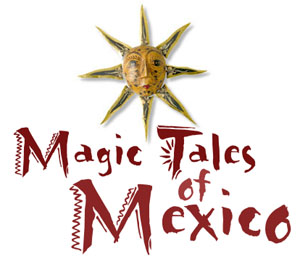
Collected by Gabriel A. Cordova, Jr.

Collected by Gabriel A. Cordova, Jr.
Gene Cowan
Washington, DC
March, 1997
Preface
The Texas Mexican Border is extremely rich in all kinds of folklore - much of it is traceable to European sources and analogues. The region is isolated and not readily accessible to professional folklorists, however, and consequently it has been very little studied.
The present collection brings together for the first time a representative, though not inclusive, sampling of one type of popular cuento - the tale of magic - which still flourishes on both sides of the Border. The stories included are very close to types of the magic tale found in Europe, and most of them show astonishing similarities.
Since the Conquest, Chihuahua and Paso del Norte, now Cidudad Juarez, have always been the principal settlements on the Camino Real. Ysleta, twelve miles east of modern El Paso, is actually a 'sport', an illegitimate offshoot of Isleta, New Mexico, generated by the Pueblo Revolt of 1680. Thus it seems a logical supposition that this region represents a distillation of Spanish-American folklore. Native New Mexicans settled within a few miles of Mexicans, members of each group retaining their own traditional culture.
The sources of the material presented in this study are many and varied. Material was garnered from my family; from contacts established while I was official interpreter for the El Paso Municipal Courts; from unlettered, humble gente del pueblo whose families have lived for generations in the same home; old vaqueros who have never been beyond the borders of their haciendas in all their long years of life; all however, retaining the legendary traditions of their Spanish forefathers.
The more extensive field work was done during the summers of 1949 and 1950. The area visited included El Paso County, Texas, Dona Ana County, New Mexico, and practically all of Northern Chihuahua, Mexico. Four of the tales in this study were told to me by residents of Chihuahua and six by residents of El Paso County. However, these particular tales, with little or no variation, were found throughout the whole region.
In the search for material I took extreme care in the choosing of narrators. First I made certain that the people interviewed were indigenous to the community. Secondly, I gave free rein to the narrator in his choice of tales. I asked him for cuentos y leyendas de today clases, tales and legends of all kinds. Consequently, I harvested material of various kinds. As a result I was able to record a great deal of colorful folk material - native remedies for curing all kinds of ailments; old ballads from Spain and France, with two, perhaps Irish in origin; tales of witches, ghosts, lost treasures, lost mine; anecdotes, riddles, and children's games. These ten magic tales represent only a small part of the traditional material I was able to record.
When any folktale persists in the same locality from generation to generation, it inevitably acquires a traditional language pattern, and its real oral value is preserved only when its peculiar idiom is retained in its narration. To preserve this tradition, the informant was asked to tell his tale slowly in his own language, that it might be copied faithfully, just as it was recited.
All the tales are transcribed in the Spanish of the people. No attempt has been made to go into the phonology and morphology of the language since the stories are indented as a contribution to folklore and not to dialectology. In some cases it was necessary, for the sake of clearness, to make the language uniform. Slang phrases and colloquialisms were changed enough so that the meaning of a particular work or phrase would be clear to readers unacquainted with Border patois.
English translations and comparative notes are presented after the Spanish versions of the tales. It should be kept in mind that the object has not been to translate the Spanish word for word, but rather to retain the spark that makes the folktale glow. Nothing, however, has been added or deleted from any cuento.
The Aarne-Thompson Types of the Folktale was the basic text used in cataloguing the tales. Most of the stories fall automatically into the categories set up by Thompson but where no existing type examples of a particular story were found, the comparative classification is clearly indicated as being only tentative. Ralph S. Boggs' Index of Spanish Folktales was not used extensively since his classifications are based on the Aarne-Thompson system.
It is interesting to note that not a single one of the Indian narrators interviewed contributed a story basically native in origin. The Tarahumares from Sisoguichic and Cusihuiriachic, and the old Tomochics from Guerrero all related well known Spanish tales. This fact, then, supports the theory current among folklorists, that the folklore of Spanish-America is fundamentally and primarily Iberic in origin.
A complete study of Texas-Mexican folklore would prove a project worthy of serious consideration at the earliest possible time. Notwithstanding the fact that the bulk of this material is still extant, it will come increasingly difficult to gather as time goes on. The old generations are dying out, and the new ones display scant interest in the old traditions.
I am deeply grateful to those who contributed to this study; to all my narrators and to all those who still preserve the old traditions, Hasta Luego!
Y entro por un callejon y salgo por otro
y cuenteme uste otro...
Gabriel Cordova
El Paso, Texas
May, 1951
Table of Contents
El Principe Oso (The Bear-Prince)
Blanca Flor (White Flower)
El Conejito Verde (The Little Green Rabbit)
Clemencia y Jose (Clemencia and Jose)
La Reina Mora (The Gypsy Queen)
El Saco de Piojo (The Louse-Skin Coat)
La Camara Prohibida (The Forbidden Chamber)
El Secreto del Gigante (The Giant's Secret)
Notes & Bibliography